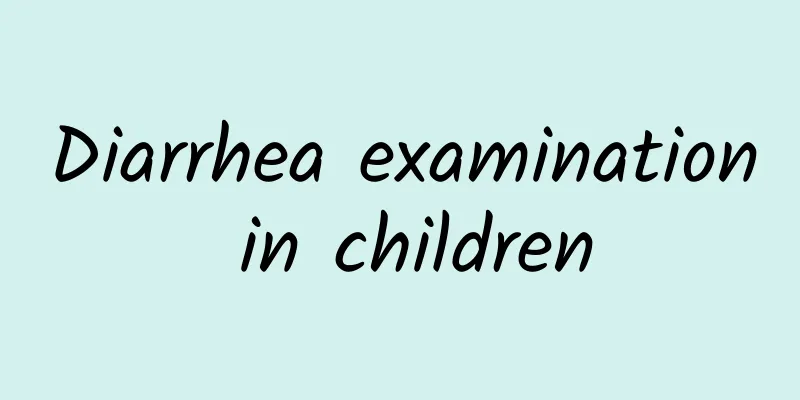What are the methods to control jaundice attacks?

|
What are the methods to control the onset of jaundice? In life, we all know that jaundice is a disease that many newborns may suffer from, especially this disease may recur and bring a great impact to the child, so if neonatal jaundice occurs, it should be taken seriously and treated actively. Let's learn about the prevention and treatment measures for neonatal jaundice. How to prevent neonatal jaundice 1. Fetal jaundice is often caused by the pregnant mother being invaded by damp heat, which affects the fetus, resulting in fetal jaundice after birth. Therefore, during pregnancy, the pregnant mother should pay attention to food hygiene, eat and drink in moderation, not eat raw or cold food, not be too hungry or too full, and avoid alcohol and spicy and hot foods to prevent damage to the spleen and stomach. 2. If a woman has a history of hepatitis or has had a baby with pathological jaundice, it is advisable to measure the antibodies in the blood and their dynamic changes before delivery, and take corresponding preventive medication measures. During delivery, the baby should be closely monitored after delivery, and timely treatment should be given if symptoms occur. 3. If the couple's blood types are incompatible (especially if the mother's blood type is O and the father's blood type is A, B or AB), or if the mother's RH blood type is negative, they should undergo regular serological and amniotic fluid tests and deliver the baby under close supervision to prevent the occurrence of neonatal hemolytic disease. 4. After the baby is born, the scleral jaundice should be closely observed to promptly understand the onset and disappearance time of jaundice. If jaundice is found, it should be treated as soon as possible, and the color changes of jaundice should be observed to understand the progress of jaundice. 5. Keep the newborn warm and start feeding early. What is the best way to treat neonatal jaundice? 1. Light therapy It is a simple and effective method to reduce serum unconjugated bilirubin. The newborn is placed in a phototherapy box, with both eyes protected with black eye masks to avoid damaging the retina, the perineum and anus covered with diapers, and the rest of the body exposed. Irradiate with single-sided or double-sided light for 2 to 48 hours (generally no more than 4 days), and stop treatment when bilirubin drops below 7 mg/dL. 2. Exchange blood therapy Blood transfusion can effectively reduce bilirubin, replace sensitized red blood cells and alleviate anemia. However, blood transfusion requires certain conditions and may also produce some adverse reactions, so the indications should be strictly followed. 3. Drug treatment Supply albumin, correct metabolic acidosis, liver enzyme inducers (such as phenobarbital), and use intravenous immune globulin. We should all be clear about the prevention and treatment of neonatal jaundice. Knowing the symptoms of neonatal jaundice will enable us to detect the disease in time. Knowing how to treat neonatal jaundice will enable us to receive correct treatment after contracting the disease. |
>>: How to prevent jaundice from occurring?
Recommend
How to treat a baby with a runny nose and dry cough
Runny nose and dry cough are common cold symptoms...
How is congenital heart disease inherited in children?
Many people are very curious about the inheritanc...
What should I do if my baby has recurrent eczema? What are the treatments for recurrent eczema in my baby?
Eczema is more likely to occur in children, and i...
What are the causes of jaundice in babies?
Infant jaundice is mainly caused by the physiolog...
What is the common sense of polio care?
Polio is an infectious disease. Many children hav...
What to do if a child has a hoarse throat and cough? What are the treatments for a child with a hoarse throat and cough?
After a child is born, his or her physical health...
My baby has allergic rhinitis and coughs in the middle of the night
If your baby has allergic rhinitis and coughs in ...
How many days does it take for the fever of hand, foot and mouth disease to subside? How many days does it take for the fever of hand, foot and mouth disease to subside?
In fact, when it comes to hand, foot and mouth di...
What are the preventive measures for acute laryngitis in children?
What are the preventive measures for acute laryng...
Drugs for treating ADHD in children
Commonly used drugs for treating ADHD in children...
What is the postoperative diet for patent ductus arteriosus? What are the postoperative precautions for patent ductus arteriosus?
For the treatment of patent ductus arteriosus, su...
Is honeysuckle effective in treating jaundice?
Everyone should know that honeysuckle is a common...
What to eat to increase breast milk? What are the ways to increase breast milk?
Most women will selflessly choose breastfeeding t...
Can Kawasaki disease in children be cured?
Kawasaki disease in children can be cured, but it...
How do you know if your baby has pneumonia? There are nine dietary taboos for children with pneumonia
If a child catches a cold and parents miss the ti...









